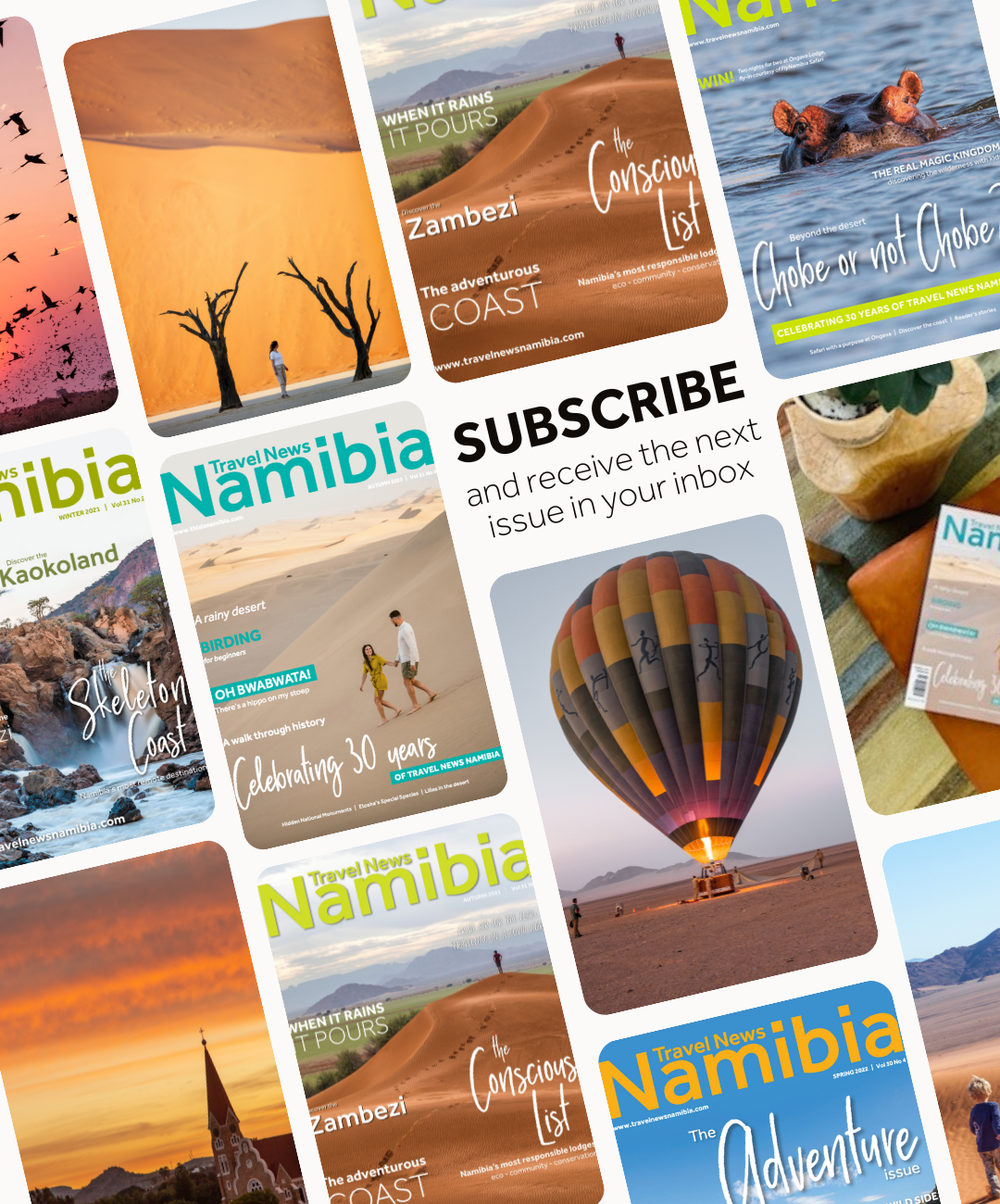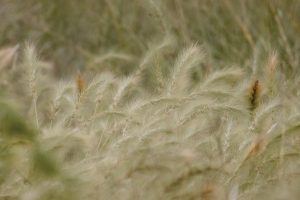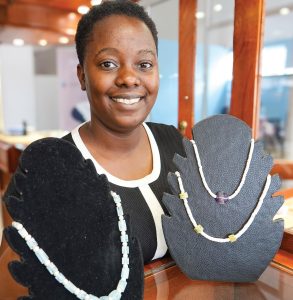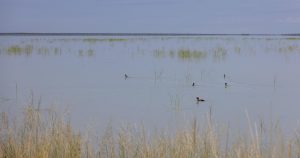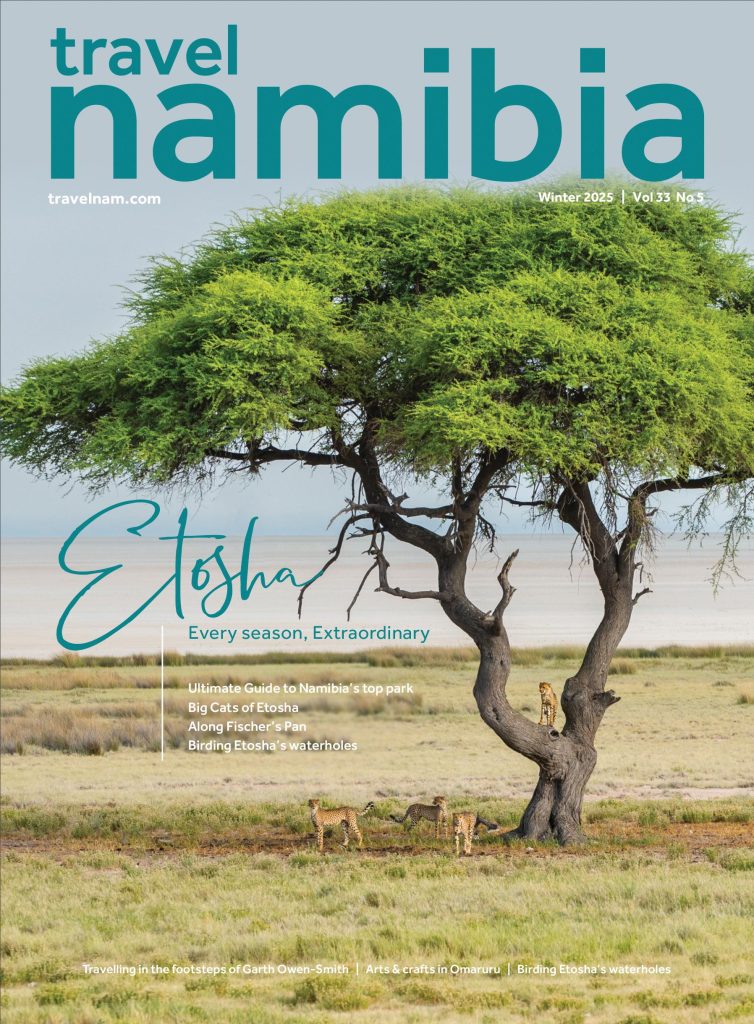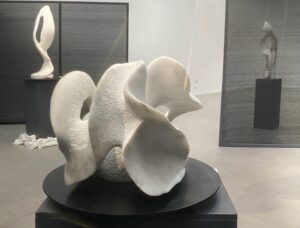
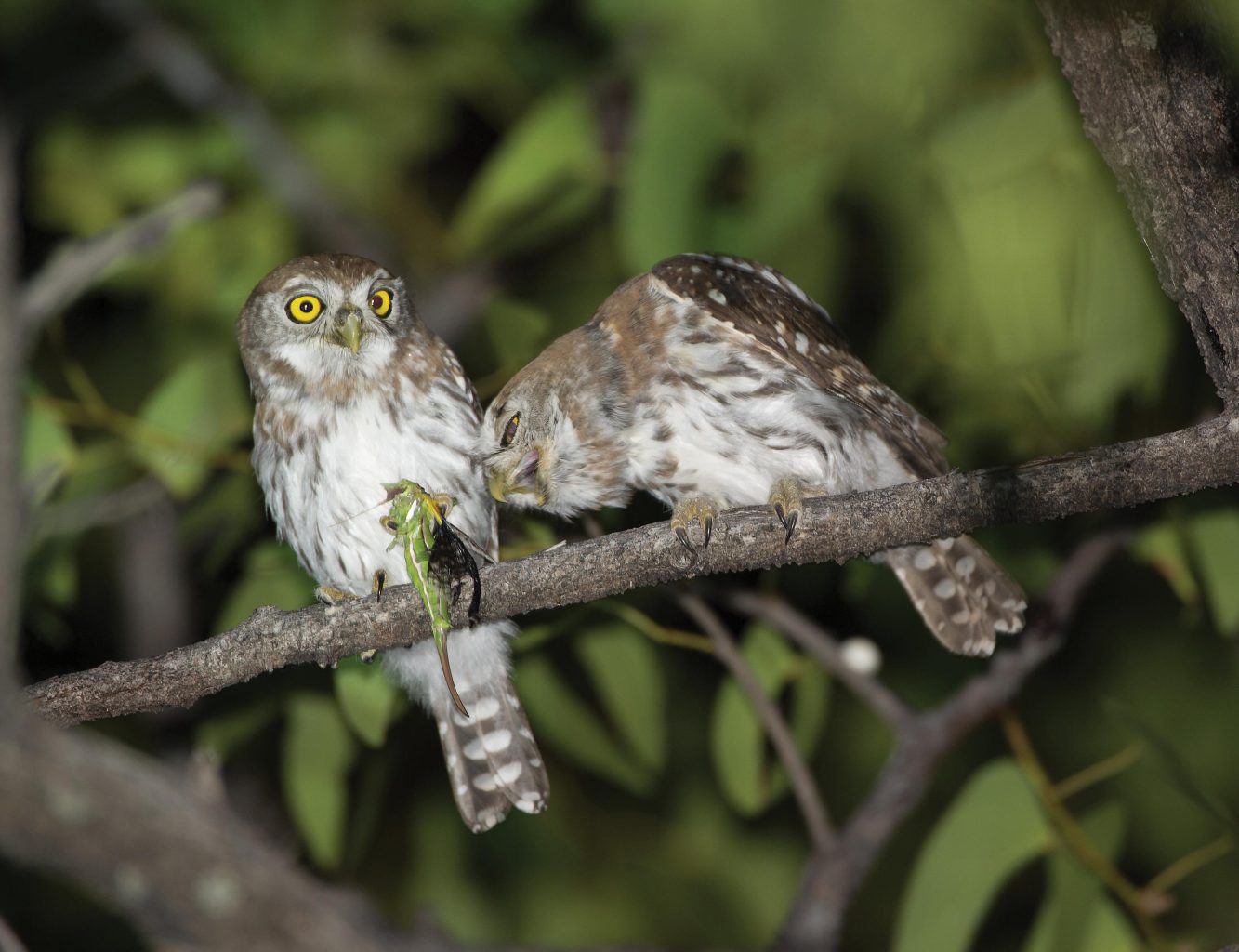
Halai
The best base for birding Etosha
Text Pompie Burger | Photographs Pompie Burger
From the Winter 2025 issue
Different people, such as birders, have different ideas about their favourite birding spot. Etosha is no different. Some prefer Namutoni and the surrounding areas, especially Fischer’s Pan where thousands of water birds congregate to enjoy the food the pan produces once it fills up during the rainy season. My favourite camp by far is Halali, probably because I prefer a place where there are lots of different birds in the camp and at the surrounding waterholes.
I started off writing about Namibia’s potholes, in this case in Etosha. On my last visit, I was especially excited because many Namibians were very chuffed about the many different sizes and shapes of the potholes. One must mention that us Namibians are not that familiar with this phenomenon, as opposed to our neighbouring countries. Apparently, various engineers from the RSA, being specialists in this field of expertise, visited Namibia to study our own interesting potholes. Needless to say they were very disappointed by their size. They were especially sad because no wildlife or birds were populating these “waterholes”. They did make a few suggestions to enlarge the potholes, but the costs involved were too much for our minuscule budget.
Halali Resort is situated in the middle of the park and subsequently boasts a vast number of beautiful mopane trees. For reasons unknown to me, a lot of birds prefer this vegetation, especially a lot of the endemic birds. I must confess the Namibian birders will find this observation a bit lame, having all seen and done them. You will hear the Bare-cheeked Babbler and see it cleaning up the camp grounds, while the Violet Wood Hoopoe rids the trees of unwanted insects and goggas. This always fascinates me, and I spend as much time as possible watching and photographing them. Apart from their beauty, the White-crested Helmet Shrike and the Southern White-crowned Shrike are regular breeders in the camp. Carp’s Tit, another endemic, is not that common but we were lucky to spot a group on one of our visits. The Damara Red-billed Hornbill is very common in the camp, also involved in the cleaning team and easy to find. It is another endemic to tick for the ticker-birders.
For me, Halali is the owl camp. While roaming the camp with my camera, looking for birds and combing the trees, one of the cleaners once asked me if I wanted to see owls. Without wasting any time, he started to show me an African Scops Owl, a Southern White-faced Owl and the nest of a Spotted Eagle Owl. He was very apologetic about not finding the Pearl-spotted Owlet but promised to call me as soon as he sees one. One night we were fortunate to have a pair of Pearlies sitting in a tree right next to our bungalow feeding on insects attracted by the light close to our braai. Needless to say the meat was well-done.
The waterholes surrounding the camp are a haven for birding. The Charitsaub waterhole has on various visits – maybe, more accurately, on all occasions – provided raptors to make any birder ecstatic. The Acacia tortilis, the only tree near the waterhole, is a must stop and search. Red-headed Kestrels, Lesser Kestrels and a large group of Amur Falcons are just some of the tree-sitters during the summer. Incidentally, Pygmy Falcons also love this tree. And over many years this waterhole has been the breeding spot for the Blue Crane. It is such an unlikely place for them to occur. In fact it is the only place where they occur in Namibia.
“Halali is not just a half-way stop between Okaukuejo and Namutoni, it is a must stop and overnight stay for any keen birder.”
The surrounding areas between the various waterholes obviously have a lot of nebrowniis. For the non-birding population: they are also known as LBJs (Little Brown Jobs). Interesting that there is a tree named after these birds, namely the Acacia nebrownii. If all else fails you can do your LBJ birding here, and without any doubt you will be in luck and be able to discuss and differ from your fellow birders about the identification of your sightings around the campfire.
The Goas waterhole to the east of Halali – after you have ticked the leopard and the lions – is always an interesting birding spot. During late winter the Red- billed Queleas use to flock to this waterhole in their thousands to quench their thirst. If you have not seen this phenomenon you will end up spending the whole day there. They attract vast numbers of raptors, and this will just improve the experience with at least four different species of raptors. The Lanner Falcons are usually the main attraction during this frenzy. This also seems to be a happy hunting ground for the European Bee-eaters during the rainy season.
Another must visit is the Nuamses waterhole. If I were a Dorsland trekker I would definitely have settled down next to this waterhole and spent the rest of my life under a mopane tree with a beer and binoculars. Needless to say, many birds agree with my observation. I have seen some of the most exciting and rare birds there. Many a birder will be very angry – they are not jealous, they are angry – to know that I have seen a Eurasian Hobby, a Striped Crake and the odd leopard there. For the more knowledgeable birder there are usually Dust Chickens (Guineafowl) hanging around the waterhole, entertaining birders like my daughter by forever chasing each other.
Halali is not just a half-way stop between Okaukuejo and Namutoni, it is a must stop and overnight stay for any keen birder. Incidentally, the hills near Halali are the only point of real elevation in most of the park.
As for the pothole hunter, I am afraid that you will be disappointed, except if you are looking for those rare minute ones so common in Namibia. All humans have potholes, some fill it with sand, some with birds, others alcohol, some never fill them. Other people dig potholes for reasons unknown. TN

